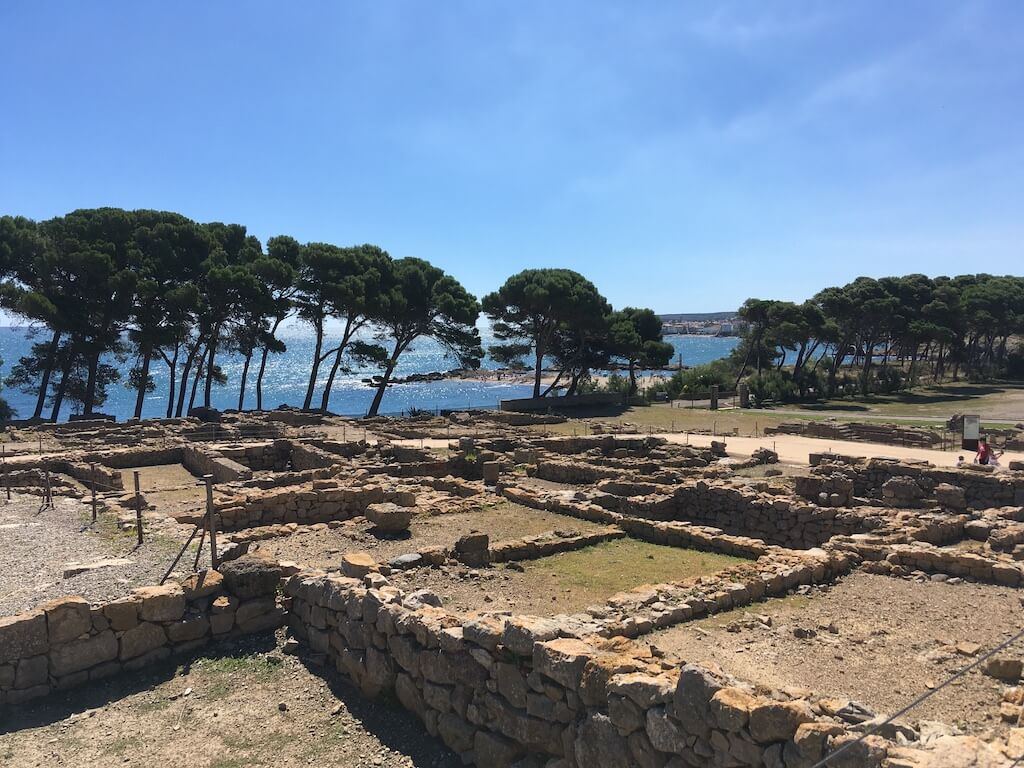In a natural bay between the rivers Ter and Fluvià there is the monumental complex of Empúries, about 30 hectares where the remains of a Greek city and another from romans are preserved.
It seems that the settlement of Empúries dates back to the Bronze Age, in the ninth century BC, and for centuries it maintained trade contacts with the Etruscans, Phoenicians and Greeks, although the previous Iberian settlement, known as the name of Indiké, has not been located.
Crossing the Mediterranean in search of a new life. History always repeats itself.
When in 8th Century BC greek farmers went into crisis, they were forced to incur debts, often with abusive interest rates that could even reach 100%. Whoever did not pay became a slave to the creditor. Many of these farmers, under pressure, emigrated before becoming slaves.
Before leaving, they had to consult the oracle of Delphi, which indicated the destination of the expedition and named who was to be its leader. Then, a celibate male was chosen from each one of the families that were to be part of it, so the young people left until they found new lands to found a colony. If they could not find a suitable place, they were forbidden to return until five years had passed.
This is how the Phocian Greeks, descendants of the Athenians, reached the shores of the Western Mediterranean around 600 BC, and 25 years after founding Massalia, present-day Marseilles, they reached the Iberian coast and founded Empúries. From Focea to Empúries it was necessary to sail for 90 days, and the navigation was done between May and September.
The initial settlement was on an islet about 300 meters in circumference located 100 meters from the coast. Surely this distance made them feel safer. From there, they traded with the natives, the Iberians Indiketes, established on the coastline. This first settlement is known as Palaiapolis and was located where Sant Martí d’Empúries now stands.
Trade brings life and makes everything grow.
About 50 years later a new city appeared on the mainland, Neapolis, which was called Emporion and to which the remains of the current archaeological site belong.
The large silos we find there show us the large amount of cereal they exported, but they also obtained metals such as iron, copper, silver… and it even seems that from there they came up the Llobregat and Cardener to reach Cardona and get salt.
Empúries strongly influenced the local Indiketes, so that a local culture was born and the city was divided into two parts: the oldest Greek part and the Iberian part, also walled.
Although at first Empúries depended on Massalia, by 500 BC it had become independent, and not long afterwards its population began to increase with Phocians fleeing the Persian conquests and the wars with the Carthaginians and Etruscans.
In the 4th century BC they minted their own silver drachmas, with a female figure, a pegasus or some dolphins. At the end of the 2nd century BC, a drought was also created in the town of Indiké, where imitations of Greek coins minted, however, made in bronze.
And the Romans arrive
In the context of the Second Punic War, in 218 BC, the consul Publius Cornelius Scipio arrived in Empúries with his troops. Empúries will be the receiving and distributing center of the Roman troops towards the rest of the Peninsula. The officers settled in the Greek area, which offered them more comfort and security, and the troops settled around the city.
But we’ll talk about that another time
If you want to visit the archaeological site of Empúries and learn much more about Greek culture in our land, do not miss one of our excursions on the Costa Brava. Combining ancient culture with coastal landscapes and medieval villages is one of the best ways to enjoy this part of the Empordà.

